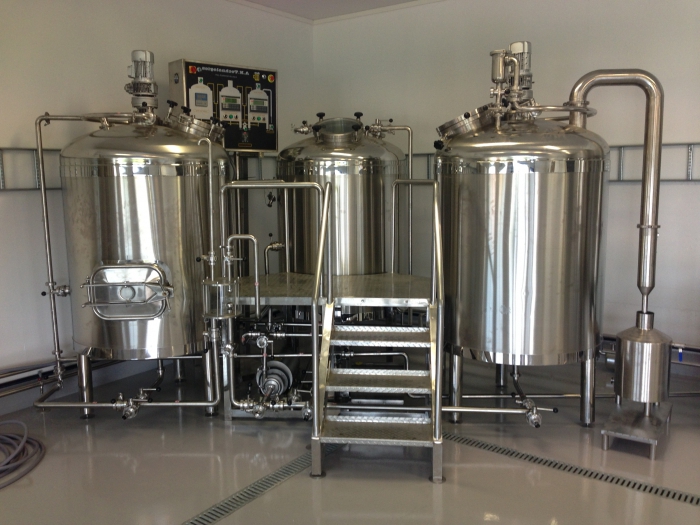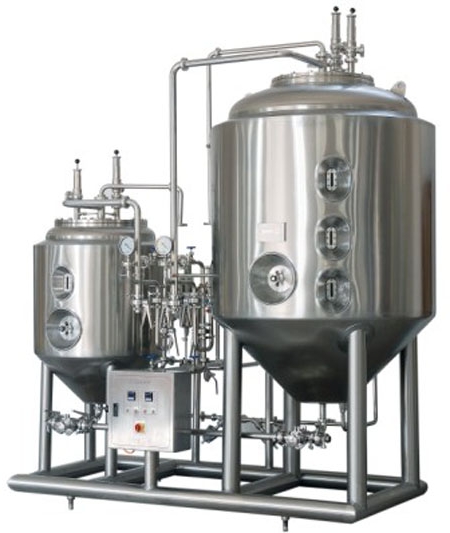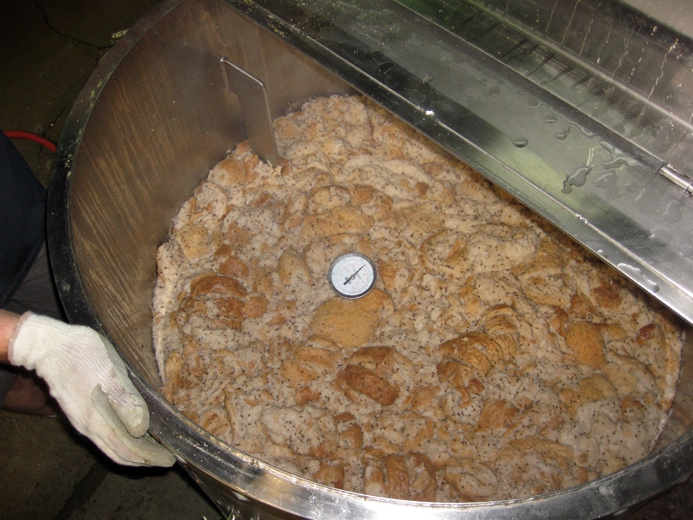
Beer business - It’s extremely profitable, because it’s easy to notice that the hoppy drink in our country surpasses even vodka in popularity (let alone wine and other elite drinks such as whiskey). So we devote this article to the main points of organizing this business, but in more detail we will dwell on the question of how to choose the right equipment for the production of beer.
Register
The first thing to do is create a legal entity. Then you can go to the SES, the fire inspectorate and state energy supervision for special permits. There is nothing complicated at this stage. Then we go to the tax office and leave there a request for a license, which has recently been mandatory for enterprises engaged in the production of beer.
STI is required to issue a permit after no more than three months from the date of application. The end of organizational matters will come when you have in your hands hygiene certificate from sanitary and epidemiological surveillance. But it can be obtained only after experts evaluate the quality of the product you are offering, and it can take almost two months to do so.
Determine the scale

Before purchasing equipment for the production of beer, you should evaluate your real capabilities and determine the scale of future production. Depending on this criterion, you can choose three options for organizing your business:
- Micro plant. Such a brewery will be enough in the initial stages, since it allows you to get up to 500 liters of finished product per day. This will require about 50 square meters of working space.
- A mini-plant that allows producing up to 15 thousand liters of hop drink per day. Accordingly, the area will need a little more (at least 70 square meters).
- Full brewery. The scale will depend on the assortment of finished products and the productivity that your equipment for the production of beer allows you to get.
Thousands of liters of beer per day will even be enough for a start, and only two people will be enough to conduct such a business.
The brewing process in brief
So, it all starts with crushing malt, which is mainly sold in 50-kilogram bags (you can safely store them in a warehouse for three months). The quality of the final product directly depends on the malt grinder - it should grind the raw materials well into flour, but at the same time leave a certain part of the grain shell of the malt, due to which the wort will be filtered in the future.
Typically, for small breweries, a double-roll crusher is enough. Crushed malt is added to the prepared water, then wort is cooked from this mixture. This process is the most difficult, because it requires repeated separation of parts of the mash, a certain exposure, temperature and filtration.
Yeast is added to the prepared wort, and then this prepared mixture is distilled into the fermentation department, where it remains for a certain period (it all depends on the type of the final product). As a result of fermentation and fermentation, the so-called unfiltered beer is obtained, if desired, it can be cleaned and clear transparent beer can be obtained.
Material and technical base

So we come close to the question of the equipment of your brewery. Of course, we will not list all the equipment for the production of beer necessary for a gigantic factory, since its list is unusually extensive.But for a novice entrepreneur who wants to open a microbrewery, it will be enough to purchase:
- tank for the first fermentation;
- laboratory equipment, which is most often sold as a set;
- technological capacity;
- fluid transfusion system.
But in case of opening a mini-factory equipment will be a little different. Here you need:
- crusher for malt;
- apparatus for filtering malt;
- wort system;
- mash pumps;
- plate cooler;
- steam generator;
- water heating system;
- hydrocyclone device;
- heat exchanger;
- dispensing containers;
- fermentation tanks;
- yeast vats;
- control system.
Such a seemingly considerable list of devices can usually be bought in one set.
Average cost of equipment
Remember that in the brewing business, the high cost of the installation does not indicate its high quality. So do not try to choose the most expensive (German or Austrian) technical base - domestic, Czech or even Chinese manufacturers often offer quite good quality for a reasonable price. If a full set of Czech equipment for brewing, bottling and packaging beer costs you 50 million rubles, then a Russian-made line will cost half as much. Quality is not particularly affected.
Beer tanks
To choose the right apparatus for the production of beer, you should pay attention to some of its components. Let us dwell on tanks for brewing beer, since it is here that a key stage in the production of a hop drink takes place.

These are special tanks that are installed in the camp basement, underground or ground. They can be made of metal, aluminum or reinforced concrete, while in the form of large cylinders reaching a diameter of 1.2 to 3.5 meters. The height of such a structure in mini-factories generally does not exceed 3 meters.
But in large enterprises, the dimensions can be completely different - the length of each of the tanks can be up to 12 meters. Although the dimensions of these tanks are adjusted to the height of your camp basement. For the convenience of customers, manufacturers offer two options for the location of tanks: vertical and horizontal. But the difference between them is only in the way of mounting the hatch and fittings.
When choosing tanks, pay attention to their inner surface, there should not be any gaps or roughness on it, otherwise the remains of the yeast will be washed off poorly. Note also that if you choose an iron tank, then from time to time it will have to be covered with a layer of resin or varnish from the inside. The front bottom of the tank is equipped with a test tap and tongue and groove.
This special device is used to support the pressure you need inside the tank and can be lever or bellows. At the top of the tank is a special air vent that removes excess oxygen while the tank is filled with beer.
You need to pay attention to the raw materials for the production of beer. From imported, it is necessary to stock up only with malt and hops, but water, sugar and yeast can be domestic production. Purchasing can be done from companies selling equipment, or from large breweries.








